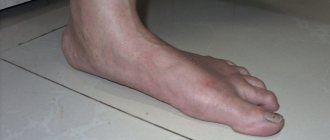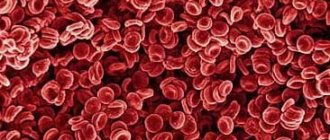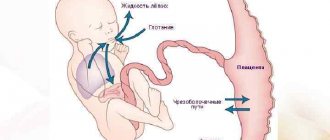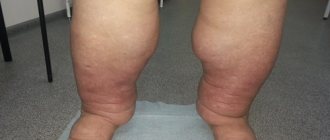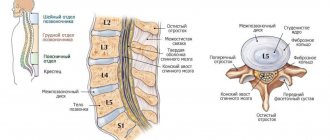First days
As soon as the girl is born, she is examined by a doctor. Normally, the baby should have 2 labia minora and 2 labia majora, a free entrance to the vagina, the presence of a hymen and an opening in it - for the release of menstrual flow in the future. On the first day, the child may have bloody discharge from the vagina. It’s the mother’s hormonal background that’s acting – and soon everything goes away.
Important! Sometimes a girl is born with an overgrown hymen. However, surgery is rarely required.
Synechia of the labia - symptoms and treatment
Synechiae of the labia minora, the clinical course of which is not accompanied by significant symptoms, often do not require treatment, since they can go away on their own [1][2].
For example, asymptomatic synechiae with a height of less than 5 mm are subject to dynamic monitoring : parents monitor the course of the disease independently, the frequency of visits to the pediatric gynecologist is determined individually [1][2]. In case of a pronounced increase in the height of synechiae and/or when complaints occur, drug therapy .
The “gold standard” of conservative treatment is the administration of ointments with conjugated estrogen or estriol. These drugs are the first line of therapy. The mechanism of their action is to increase the number of glandular cells and epithelial cells, enhancing recovery under the influence of exogenous estrogen.
The ointment is prescribed in a course and applied topically once a day. Side effects may include hyperpigmentation of the vulva, rash, engorgement of the mammary glands and bloody discharge from the genital tract. These side effects require discontinuation of drugs.
It is preferable to use ointments containing estriol. They may also cause hormone-related side effects, but the risk of these has been shown to be lower than with conjugated estrogens [1][2].
Abroad, ointments containing topical steroids (for example, betamethasone) are actively used. This group of drugs also demonstrates a good clinical response in patients. The combined use of topical steroids with estrogen-containing drugs is possible [2].
The ineffectiveness of herbal baths, antibacterial ointments (with the exception of vulvovaginitis with an identified pathogen), applications with animal fats, and enzymatic agents has been proven [2].
It has been noted that the earlier conservative therapy for synechiae is started (i.e. at a younger age), the higher the frequency of a pronounced therapeutic response, but the higher the frequency of relapses [2].
Recurrent formation of synechiae with conservative treatment occurs in 41% of cases [3]. The reason for the relapse of the disease is unresolved chronic inflammation, which caused the formation of synechiae. Eliminating it is not such an easy task.
The surgical method of treatment is mechanical or instrumental separation of the labia minora [2]. Indications for dissection of synechiae are:
- complete fusion of the labia minora;
- the presence of pronounced signs of impaired urine outflow;
- the presence of a persistent recurrent course of synechiae;
- ineffectiveness of conservative therapy.
The operation is performed on an outpatient basis. 5-10 minutes before the procedure, topical anesthesia using an ointment containing lidocaine is used for pain relief. Sometimes surgery is preceded by the administration of sedatives to calm the child. During the operation, the doctor spreads the labia majora in opposite directions and cuts the connecting membrane with a scalpel or scissors. A grooved probe is inserted into the formed hole, along the groove of which the connective tissue membrane is completely dissected with a scalpel.
Some authors suggest applying continuous upholstery sutures to the wound surface of the labia minora to prevent recurrence [3]. It is believed that this method can reduce the frequency of recurrence of synechiae to 17% [3].
In the presence of “fresh” thin synechiae, mechanical separation of the labia minora in opposite directions without the use of cutting instruments is often sufficient: under the influence of tension, the connective tissue bridges are torn without causing pain.
Parents can eliminate “fresh” synechiae on their own without seeing a doctor. To do this, it is recommended to separate the labia with cotton swabs and emollients. Most often this method is effective.
To reduce the risk of relapse, it is recommended to apply ointment with conjugated estrogen or estriol to the wound surface before healing. As a rule, after manipulation, children do not complain of pain, but sometimes they may feel discomfort during urination during the first two days.
The relapse rate during surgical dissection of synechiae of the labia minora reaches 50%, therefore, it is not advisable to use surgical treatment tactics as the first line of therapy [1][2][3].
The high frequency of relapses in the treatment of synechiae of the labia minora dictates the need to search for alternative methods of therapy. The possibilities of using gels with hyaluronic acid are now being actively studied, since it is involved in tissue healing and improves their trophism. The advantage of such gels is their low allergenic potential, immune neutrality and the absence of systemic side effects. Studies have demonstrated a good therapeutic response when using gels with hyaluronic acid as monotherapy and in combination with surgical dissection of synechiae [8][9][10][11]. The study of this group of drugs is a promising direction in the development of new methods for treating synechia of the labia minora.
8-9 years
The mammary glands gradually form, single hard hairs appear on the pubis, and the waist is indicated. The child quickly reaches up. All this suggests that the young lady’s sex secretion glands have begun to work.
Important! Breasts, of course, don't appear overnight. First, these are small seals. Normally, they do not hurt, but the girl may complain of discomfort when touched. Also, the mammary glands never grow at the same time, so for some time one breast may be smaller than the other.
Signs of pathology
Synechia of the labia majora may not cause discomfort to the girl. In some cases, problems arise with urination, the child begins to grunt, gag heavily and cry when he wants to urinate. After urination, immediate relief occurs.
The following symptoms may also occur:
- redness of the skin in the genital area, rash;
- irritation of mucous membranes;
- crying indicating pain when touched when washing or bathing;
- upward direction of the urine stream, which is typical for boys.
In girls from 1 year of age, urine leakage occurs even after the child is already potty trained.
12-15 years
It is during these years, on average, that menstruation begins. The first two years the cycle begins to develop - menstruation may be absent for 2-3 months. Then the cycle should be stable - 24-35 days.
Important! If you have pain, dizziness, nausea, you need to consult a gynecologist. During the transition period, it is important to ensure that the young lady gets enough sleep and eats normally - diets can lead to hormonal imbalance, menstrual cycle disruptions and other negative health consequences.
How to conduct an inspection
Before the examination, wash your hands thoroughly with soap and water and trim your nails so as not to injure the delicate skin. While spreading the baby's legs, carefully examine the genitals. This highlights the presence of a genital fissure through which the vagina can be seen.
If instead of a crack, only a whitish stripe is visible, and attempts to part the labia do not yield results, there is a high probability of synechiae. In rare cases, the labia majora also become fused.
Keep calm
The girl should be shown to the gynecologist at each of her significant periods - before entering kindergarten, before school, with the arrival of her first menstruation - for the purpose of prevention.
The “First Gynecologist” program is designed specifically for young ladies – girls entering puberty.
The package includes:
- initial and repeated consultations with an obstetrician-gynecologist;
- inspection;
- bacterioscopic examination of urogenital secretions;
- bacteriological examination of urogenital secretions with determination of sensitivity to antibiotics;
- Ultrasound of the pelvic organs.
Reasons for the formation of synechiae
In infancy, the problem of synechiae rarely occurs, since a certain amount of estrogens from the mother is still present in the baby’s body. Over time, the hormone is destroyed.
Low estrogen levels for little girls are physiologically normal. However, this is precisely what determines the high sensitivity of the mucous membranes of intimate areas and the tendency to form adhesions under the influence of provoking factors. The causes of vulvar synechia in girls can be:
- infectious and inflammatory diseases of the urinary system or genital organs (vulvitis, vulvovaginitis, urethritis, cystitis);
- overly active intimate hygiene;
- mucosal injuries;
- use of aggressive detergents for washing;
- insufficient genital hygiene;
- regular contact with allergens (food, household);
- complications during pregnancy or childbirth;
- abuse of diapers (as a result, overheating of the genitals and lack of contact with air).
As a girl gets older, the level of female hormones in a girl increases, which thickens the mucous membrane of the genital organs and reduces its sensitivity to irritants.
Synechiae in girls looks like a thin film between the labia minora and/or labia majora with a clearly visible midline. Partial (⅓, half) or complete fusion is possible. The film is capable of covering the opening of the urethra. In this case, miction becomes difficult. The girl has to push to empty her bladder. Due to the discomfort, it is difficult to sit the child on the potty.
Prevention of synechiae in girls
Unfortunately, the phenomenon of synechia tends to “return” several times even after surgical separation. The problem is solved only with the onset of puberty. Preventive measures, compliance with hygiene rules and daily routine will help significantly reduce the risk of relapse of the disease. Therefore, prevention includes the implementation of the following principles:
- Wash your baby with plain tap water without using soap or other cosmetics that dry out the vaginal mucosa and wash away beneficial microflora.
- If you don't like bubble baths, if you can't give them up completely, add them shortly before the end of your bath.
- When choosing underwear, you should give preference to models made from natural cotton. Only in these panties will your skin breathe freely. You should also ensure that clothing does not press or rub the skin, as this can provoke an inflammatory process.
- Early detection and treatment of infectious and viral diseases. In most cases, synechiae occur as a result of incorrectly and incompletely treated diseases.
- Regular visits to a pediatric gynecologist. This recommendation often raises eyebrows among mothers who think that a little girl has no business being in a doctor's office. However, doctors recommend visiting a gynecologist as early as preschool age.
- Timely replacement of diapers, in some cases you will need to stop using them, wash the clothes of babies and preschoolers, it is better to separate them from the clothes of adult family members.
- Choose commercially available cleaning products, cosmetics, toilet paper and other care products without artificial colors or fragrances.
- Preventive use of ointments with estrogen in girls who have previously been diagnosed with adhesions of the genital organs. The dosage and duration of treatment is determined by the doctor!
- Pregnant women in the third trimester actively struggle with the symptoms of late toxemia (protein in the urine, edema, high blood pressure), as these symptoms lead to complications during childbirth and the appearance of abnormalities in the newborn.
Formula for ideal female genitals
It’s not difficult to understand whether everything is normal in your intimate area. If all is well, the following conditions are met:
- Nothing gets in the way;
- Nothing irritates;
- Nothing hurts;
- The skin is clean, smooth, without ulcers, acne or scratching;
- There are no problems during sexual intercourse.
If any condition is not met or something bothers you, contact our Intimate Plastic Center. Our gynecologists know how to correct any defect in this area.
You can view the results of the work of gynecological surgeons in the section “Photos before and after intimate plastic surgery.”
